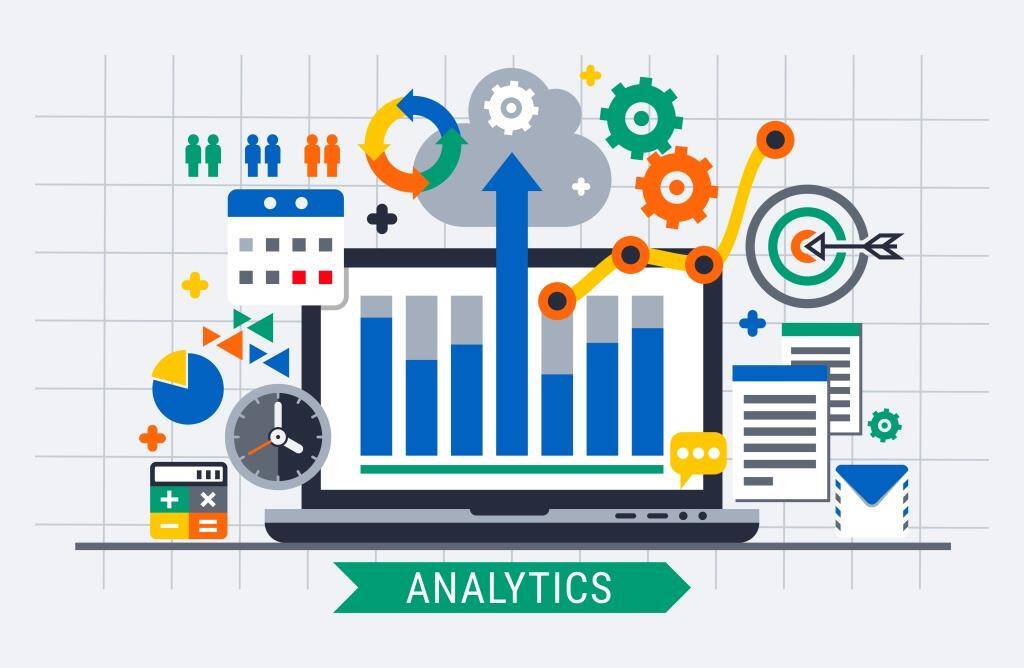Automation Tools Redefine Future Business

In the relentless march of technological progress, few advancements have reshaped the operational landscape of businesses as profoundly as automation tools. What began with simple macros and rudimentary scripting has blossomed into a sophisticated ecosystem of intelligent software and robotic systems, fundamentally altering how tasks are performed, decisions are made, and value is created. The pervasive integration of automation isn’t merely about expediting processes; it’s about fundamentally redefining business models, enhancing efficiency, empowering human potential, and driving unprecedented levels of innovation. This shift is not just a trend; it’s a foundational transformation setting the stage for the next era of enterprise.
This comprehensive article delves deep into the burgeoning world of business automation, exploring the core technologies that fuel these innovations and their transformative impact across diverse industries. We will uncover how Artificial Intelligence (AI), Machine Learning (ML), Robotic Process Automation (RPA), and advanced orchestration platforms are converging to create hyper-efficient, adaptive, and scalable workflows. Our aim is to provide a detailed roadmap for organizations seeking to navigate this exciting frontier, highlighting the benefits, the challenges, and the immense potential of strategically integrating automation to future-proof their operations and achieve sustained competitive advantage.
Why Businesses Are Evolving

For decades, businesses have sought ways to improve productivity and reduce operational costs. The initial wave of industrial automation brought robots to factory floors. The digital revolution then brought software to automate back-office functions. However, the current wave of automation is far more pervasive and intelligent, driven by several key factors:
- Complexity of Modern Business: Global markets, stringent regulations, and vast amounts of data make manual processes unwieldy and prone to error.
- Demand for Speed and Agility: Customers expect instant service, and market conditions shift rapidly, demanding quick adaptation and execution.
- Cost Reduction and Efficiency: Automating repetitive, manual tasks reduces labor costs, eliminates human error, and speeds up process completion.
- Enhanced Accuracy and Compliance: Bots and automated systems follow rules precisely, ensuring consistency and adherence to regulatory requirements.
- Empowering Human Capital: By offloading mundane, repetitive tasks, automation frees up employees to focus on higher-value activities that require creativity, critical thinking, strategic planning, and human interaction.
- Competitive Pressure: Businesses that fail to embrace automation risk being outmaneuvered by more agile, efficient, and data-driven competitors.
- Data-Driven Decisions: Automated workflows often generate vast amounts of data, which, when analyzed, provides deeper insights into operational performance and customer behavior.
In essence, automation is transforming businesses from slow, labor-intensive machines into lean, agile, and intelligent enterprises capable of operating at unprecedented scales and speeds.
Key Categories of Automation Tools
The landscape of automation tools is diverse, encompassing various technologies designed to automate different types of tasks and processes. Understanding these categories is crucial for building a comprehensive automation strategy.
A. Robotic Process Automation (RPA)
RPA focuses on automating repetitive, rule-based, and high-volume tasks typically performed by humans interacting with software applications. Think of it as software robots mimicking human actions on a computer interface.
- Core Functionality: Mimics human clicks, keyboard inputs, and data entry across various applications (e.g., logging into systems, copying and pasting data, extracting information from documents, generating reports).
- Key Characteristics: Non-invasive (doesn’t require deep integration with existing systems), fast to deploy, ideal for legacy systems without APIs.
- Use Cases: Invoice processing, customer onboarding, data migration, report generation, call center support tasks, HR onboarding/offboarding.
- Examples: UiPath, Automation Anywhere, Blue Prism, Microsoft Power Automate Desktop.
B. Business Process Management (BPM) Suites
BPM software focuses on managing and optimizing end-to-end business processes, ensuring they are efficient, compliant, and adaptable. While not purely automation, it provides the framework for intelligent automation.
- Core Functionality: Designs, models, executes, monitors, and optimizes complex business processes that often involve a mix of human tasks and automated steps. Provides workflow orchestration and task management.
- Key Characteristics: Process-centric, focuses on improving the entire lifecycle of a business process, often involves human-in-the-loop automation.
- Use Cases: Loan application processing, claims management, order-to-cash cycles, supply chain management, compliance workflows.
- Examples: Appian, Camunda, Pega, Bizagi.
C. Artificial Intelligence (AI) and Machine Learning (ML) Automation
AI and ML are the intelligence layers that elevate automation beyond simple rules, enabling systems to learn, adapt, and make decisions.
- Intelligent Process Automation (IPA): Combines RPA with AI technologies like NLP (Natural Language Processing) and Computer Vision to handle unstructured data (e.g., extracting data from unformatted invoices, understanding customer emails) and make more complex decisions.
- Cognitive Automation: Enables systems to perceive, reason, learn, and act, mimicking human cognitive functions for tasks like sentiment analysis, predictive maintenance, or fraud detection.
- Predictive and Prescriptive Analytics: AI-driven automation can analyze data to forecast future outcomes (e.g., predicting equipment failure) and even recommend optimal actions (e.g., suggesting the best marketing strategy).
- Examples: Integrated within advanced RPA and BPM platforms, specialized AI services (e.g., Google AI Platform, AWS Machine Learning), and tools like UiPath AI Center or Automation Anywhere IQ Bot.
D. Integration Platform as a Service (iPaaS)
iPaaS solutions facilitate the seamless integration of various applications and data sources, often cloud-based, which is crucial for end-to-end process automation.
- Core Functionality: Connects disparate systems (SaaS apps, on-premise databases, custom applications) via APIs, enabling data flow and process orchestration across an enterprise.
- Key Characteristics: Cloud-native, scalable, provides pre-built connectors, supports real-time data synchronization.
- Use Cases: Automating data transfer between CRM and ERP, synchronizing customer data across marketing platforms, automating workflows spanning multiple cloud services.
- Examples: MuleSoft Anypoint Platform, Dell Boomi, Workato, Zapier (for simpler integrations).
E. Low-Code/No-Code Development Platforms
These platforms empower business users and “citizen developers” to build and automate applications and workflows with minimal or no coding.
- Core Functionality: Visual drag-and-drop interfaces, pre-built templates, and components allow rapid development of custom applications and automated processes.
- Key Characteristics: Accelerates application development, democratizes automation, reduces reliance on professional developers.
- Use Cases: Building custom approval workflows, creating internal tools, automating data collection forms, developing simple customer portals.
- Examples: Microsoft Power Apps, OutSystems, Mendix, Airtable, AppGyver.
F. Chatbots and Conversational AI
Automating customer interactions and internal support.
- Core Functionality: AI-powered virtual assistants that can understand natural language (text or voice), provide information, answer FAQs, and perform tasks.
- Key Characteristics: 24/7 availability, consistent responses, ability to handle high volumes of inquiries, often escalate complex issues to human agents.
- Use Cases: Customer service, IT help desks, HR support, sales lead qualification.
- Examples: Google Dialogflow, IBM Watson Assistant, Zendesk Chatbot, Freshdesk Messaging.
Transformative Impact of Automation

The strategic deployment of automation tools has a ripple effect across every facet of a business, leading to fundamental transformations.
A. Enhanced Operational Efficiency and Cost Reduction
- Faster Process Execution: Tasks are completed in seconds or minutes instead of hours or days, accelerating overall business cycles.
- Reduced Manual Errors: Bots follow rules precisely, eliminating human mistakes and rework, leading to higher data quality and fewer compliance issues.
- Lower Operational Costs: Automation reduces the need for manual labor in repetitive tasks, leading to significant cost savings.
- 24/7 Operations: Automated processes can run continuously, even outside business hours, maximizing throughput and efficiency.
- Scalability: Automated workflows can be easily scaled up or down to meet fluctuating demand without needing to hire or lay off staff.
B. Improved Customer Experience
- Faster Service Delivery: Automated customer service workflows (e.g., instant FAQ responses, automated order status updates) lead to quicker resolutions and higher satisfaction.
- Personalized Interactions: AI-driven automation can tailor communications and offerings based on customer data, creating more relevant and engaging experiences.
- Consistent Service: Automated processes ensure uniform service quality, regardless of the agent or time of day.
- Proactive Engagement: Automation can identify customer needs or potential issues before they become problems, allowing for proactive support.
C. Empowered Workforce and Employee Satisfaction
- Focus on High-Value Work: By taking over mundane, repetitive, and unfulfilling tasks, automation frees employees to engage in more creative, strategic, and intellectually stimulating work.
- Upskilling Opportunities: Employees can be trained to manage, monitor, and optimize automated processes, developing new, higher-level skills.
- Reduced Burnout: Less repetitive strain and more engaging work can lead to higher job satisfaction and lower employee turnover.
- Improved Collaboration: Automated workflows can streamline internal communication and task assignments, fostering smoother teamwork.
D. Enhanced Data Analytics and Strategic Decision-Making
- Better Data Quality: Automated data collection and transformation ensure cleaner, more reliable data for analysis.
- Real-time Insights: Automation can feed data into analytics dashboards in real-time, providing immediate visibility into key performance indicators.
- Predictive Capabilities: AI-driven automation enables businesses to move from reactive reporting to predictive forecasting (what will happen?) and prescriptive recommendations (what should we do?).
- Competitive Advantage: Data-driven decisions, enabled by automated insights, allow businesses to respond faster to market changes, identify new opportunities, and optimize their strategies.
E. Agility and Innovation
- Faster Time-to-Market: Automating product development processes, testing, and deployment can significantly accelerate the launch of new products and services.
- Rapid Process Adaptation: Low-code/no-code platforms and flexible BPM suites allow businesses to quickly design, test, and deploy new workflows in response to changing market conditions or regulatory requirements.
- Experimentation: Automation reduces the cost and effort of experimenting with new business models or operational approaches.
- New Business Models: Automation can enable entirely new service offerings or operational models that were previously impossible or cost-prohibitive.
Challenges and Considerations
While the benefits are compelling, successfully implementing automation tools requires careful planning and addressing potential hurdles.
A. Resistance to Change and Employee Concerns
- Fear of Job Displacement: Employees may fear that automation will lead to job losses. Clear communication about augmentation vs. replacement is crucial.
- Adaptation to New Roles: Employees need training and support to transition to new roles that involve managing bots, optimizing processes, or focusing on higher-value tasks.
- Cultural Shift: Moving from manual processes to automated workflows requires a significant cultural shift within the organization.
B. Data Quality and Governance
- Garbage In, Garbage Out: Automation amplifies issues with poor data quality. If the input data is flawed, the automated output will also be flawed.
- Data Silos: Data spread across disparate systems can hinder end-to-end automation. Robust data integration is essential.
- Data Security and Privacy: Automating processes that handle sensitive data requires strict security protocols and adherence to data privacy regulations (e.g., GDPR, CCPA).
C. Integration Complexity
- Legacy Systems: Integrating automation tools with older, non-API-friendly legacy systems can be challenging and require custom solutions.
- Complex Ecosystems: Orchestrating workflows across dozens or hundreds of different applications (SaaS, on-premise) requires sophisticated integration strategies (often with iPaaS).
D. Scalability and Governance
- “Bot Sprawl”: Uncontrolled deployment of RPA bots without proper governance can lead to a chaotic, unmanageable automation landscape.
- Maintenance: Automated processes need ongoing maintenance, monitoring, and updates as business rules or underlying systems change.
- Return on Investment (ROI): Accurately measuring the ROI of automation initiatives can be challenging, especially for intangible benefits like improved employee morale.
E. Ethical Considerations
- Algorithmic Bias: If AI is used in decision-making automation, ensuring fairness and mitigating bias in algorithms is critical, especially in areas like HR or lending.
- Accountability: Establishing clear lines of accountability when automated systems make errors is important.
- Transparency: Understanding how AI-driven automated decisions are made (the “black box” problem) is crucial for trust and auditing.
Implementing Automation for Business Redefinition
To truly redefine business operations through automation, a well-thought-out strategy is essential.
A. Define Clear Business Objectives and Use Cases
- Don’t automate for automation’s sake. Identify specific business pain points, bottlenecks, or opportunities where automation can deliver measurable value (e.g., reduce processing time by X%, improve data accuracy by Y%).
- Start with high-impact, low-complexity pilot projects to demonstrate early success and build internal champions.
B. Prioritize Process Optimization Before Automation
- “Automating a mess creates an automated mess.” Before deploying tools, analyze and optimize your existing business processes. Eliminate unnecessary steps and streamline workflows.
- Use BPM methodologies to map out and re-engineer processes for automation.
C. Build a Multi-Disciplinary Automation Center of Excellence (CoE)
- Establish a dedicated team or CoE comprising IT, business process owners, data scientists, and change management specialists.
- This CoE will govern automation initiatives, define best practices, provide training, and ensure alignment with business strategy.
D. Invest in the Right Technology Stack
- Select automation tools that align with your current infrastructure, future growth plans, and team capabilities (e.g., cloud-native, AI-enabled, scalable, good integration).
- Consider a blend of RPA, BPM, iPaaS, and AI tools based on your specific automation needs.
E. Emphasize Change Management and Employee Engagement
- Communicate transparently about the purpose and benefits of automation.
- Involve employees in the automation process, soliciting their input and addressing their concerns.
- Provide robust training and reskilling programs to prepare the workforce for new roles and responsibilities.
F. Implement Robust Data Governance and Security
- Ensure data quality, consistency, and security are paramount throughout all automated workflows.
- Establish clear policies for data access, usage, and privacy, especially when dealing with sensitive information.
- Regularly audit automated processes for security vulnerabilities and compliance adherence.
G. Adopt an Iterative and Scalable Approach
- Start small, measure success, and iterate. Don’t attempt to automate everything at once.
- Build a pipeline of automation candidates and prioritize based on ROI and strategic impact.
- Design automated processes with scalability in mind, allowing them to handle increasing volumes of work.
H. Continuously Monitor and Optimize
- Automation is not a “set it and forget it” endeavor. Continuously monitor the performance of your automated processes, identify areas for further optimization, and adapt to changing business rules or technical environments.
- Leverage analytics from your automation tools to identify bottlenecks and improvements.
The Future of Autonomous Enterprises
The trajectory of automation tools points towards an even more intelligent, integrated, and pervasive presence in businesses, eventually leading to highly autonomous enterprises.
A. Hyperautomation as the Norm
- The combination of RPA, AI, ML, BPM, iPaaS, and low-code will become standard practice, leading to the end-to-end automation of almost every repeatable business process.
- Businesses will leverage digital twins and process mining to identify, design, and implement automation at an unprecedented scale.
B. AI-Driven Decision Automation
- AI will move beyond assisting humans to autonomously making more complex, real-time operational decisions, guided by strategic parameters set by humans.
- This will include automated pricing adjustments, dynamic inventory management, and real-time fraud prevention.
C. The Rise of “Digital Workers”
- The concept of a “digital worker” (a sophisticated combination of RPA bots, AI, and cognitive capabilities) will become more formalized, handling a significant portion of administrative and data-intensive tasks, augmenting human teams.
D. Human-in-the-Loop AI Automation
- While automation will increase, human oversight will remain crucial. Future tools will intelligently identify tasks requiring human intervention, seamlessly integrating human judgment and creativity into automated workflows.
- This will foster a true human-AI collaboration model.
E. Ethical AI and Trust by Design
- As automation takes on more critical roles, the development of ethical AI principles, explainable AI (XAI), and robust governance frameworks will be built into automation platforms from the ground up, ensuring transparency, fairness, and accountability.
Conclusion
The profound impact of automation tools redefining business cannot be overstated. We are witnessing a fundamental shift from manual, siloed operations to intelligent, interconnected workflows that are driving unprecedented levels of efficiency, agility, and insight. From Robotic Process Automation streamlining back-office functions to AI-powered systems making strategic decisions, these technologies are liberating human potential from the mundane, allowing organizations to focus on innovation, creativity, and customer value.
While the journey of automation presents challenges related to change management, data governance, and ethical considerations, the path forward is clear. By embracing a strategic, layered approach, investing in the right tools and talent, and fostering a culture of continuous optimization, businesses can harness the immense power of automation. This transformation is not merely about surviving in a competitive market; it’s about building a future where processes flow effortlessly, decisions are intelligently informed, and the enterprise itself becomes a dynamic, adaptive, and truly intelligent entity. The future of business is automated, and the time to redefine is now.







